Blue-and-White Flycatcher Cyanoptila cyanomelana 白腹姬鶲
Category I. Passage migrant to wooded areas in variable numbers, more numerous in spring than autumn.
IDENTIFICATION
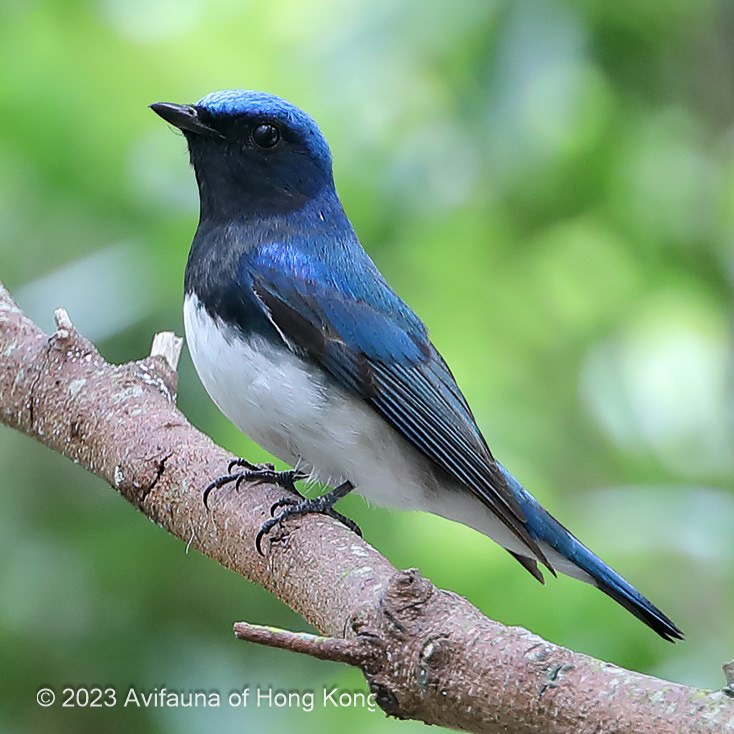
Apr. 2019, Michelle and Peter Wong.
16–17 cm. A fairly large flycatcher. Nominate subspecies males have bright blue upperparts from the rear of the head to the tail and a paler crown. The outer tail feathers have a white panel at the base. The face, throat, breast and flanks are glossy black. The rest of the underparts are white.
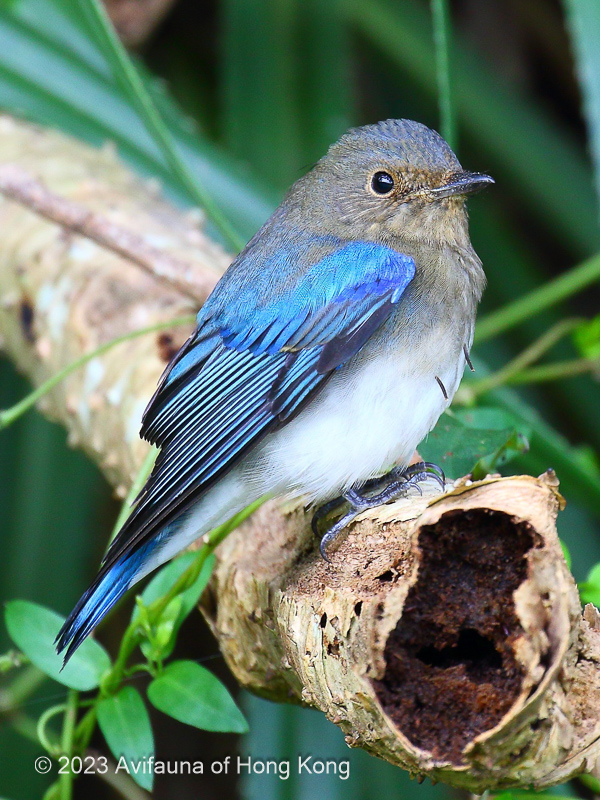
Apr. 2018, Kenneth Lam.
First-winter males resemble female but have blue on the wings, rump and tail.
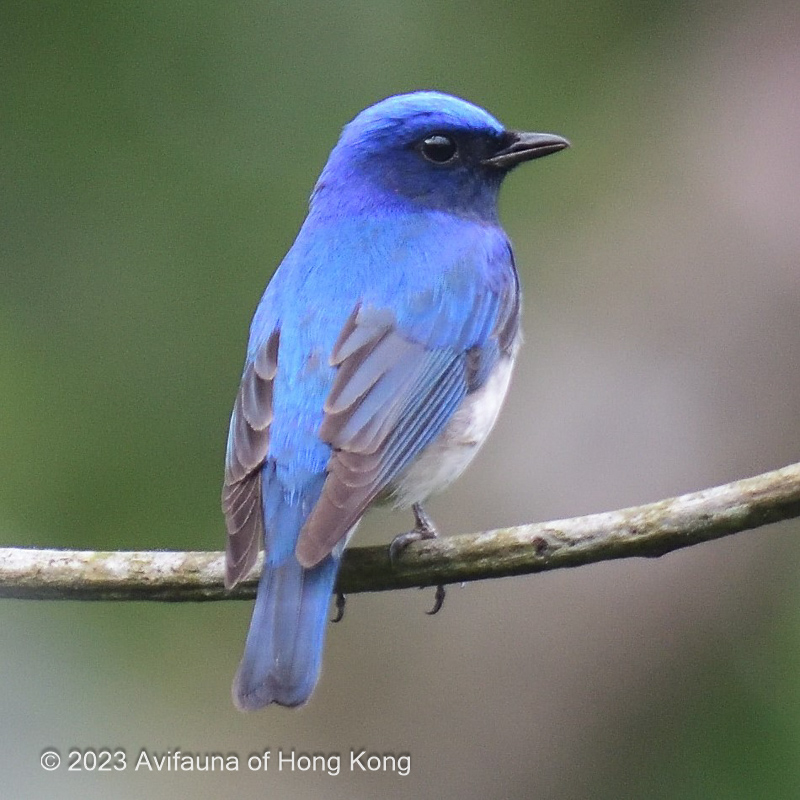
Mar. 2019, Sherman Yeung.
Adult male C. c. intermedia has matt blackish-blue face, throat and breast, often with a bluish wash. The blue of the upperparts is intermediate between cyanomela and Zappey’s Flycatcher.
Separation of female and immature male intermedia from nominate cyanomela, and of both from female and immature male Zappey’s Flycatcher is currently uncertain.
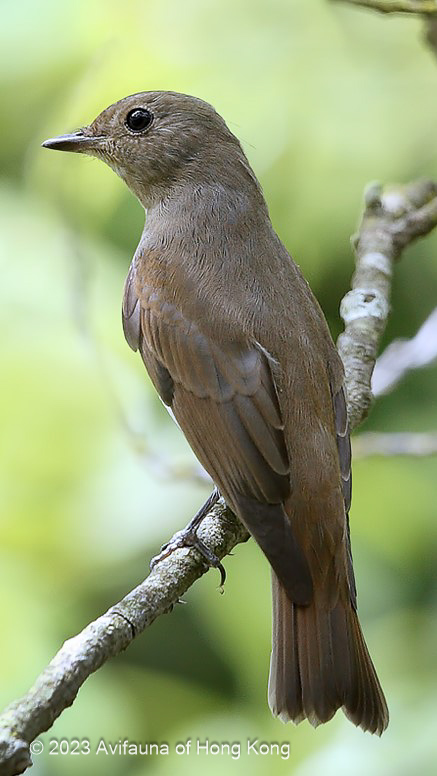
Oct. 2009, Michelle and Peter Wong.
Female is plain and has greyish-brown upperparts with a rufous-brown tinge to the wings, rump and tail, and a narrow pale eye ring.
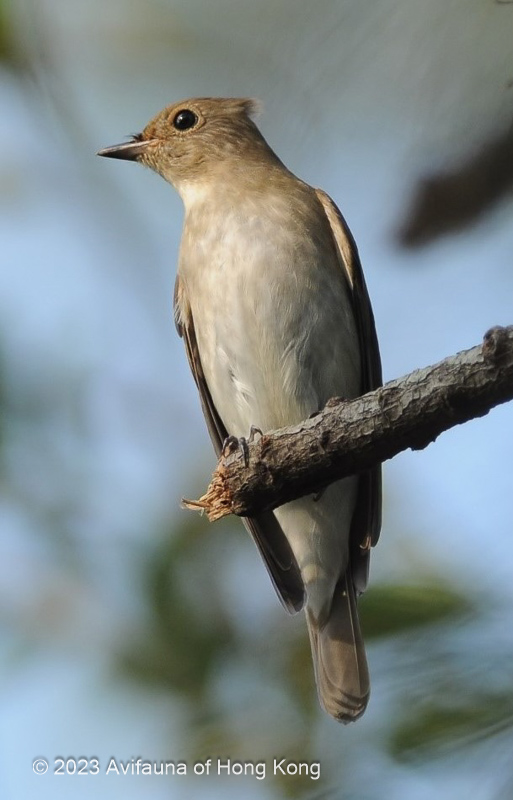
Oct. 2008, CHENG Nok Ming.
The breast of the female is olive-grey and contrasts with the paler central throat. The belly and undertail are whitish.
VOCALISATIONS
The typical call is a low ‘tuk’ or ‘klik’, although it is rarely heard.
DISTRIBUTION & HABITAT PREFERENCE
Occurs in widespread localities where suitable tree cover for migrants exists. Areas of mature forest on the Tai Mo Shan massif are good for this species, as are migrant hotspots such as Po Toi and Ho Man Tin.
OCCURRENCE
Blue-and-white Flycatcher is a passage migrant in variable numbers and is commoner in spring than autumn (Figure 1). Approximately 65% of sightings from 1999 to 2020 were in spring, 35% in autumn. Extreme dates are 25 February to 4 May and 24 August to 28 December. There appears to be little change in the pattern of occurrence since 1958.
The February record involved one on 25 February 1961 at the Central Government Offices compound on HK Island. Between 1999 and 2020 the earliest spring migrant occurred on 9 March 2010 on Po Toi, but it was only recorded in the second week of March in three other years. The number of sightings increases during the last two weeks of March and peaks in the first half of April, particularly in the first week (43% of spring records occurred in this week). Migration tails off considerably during the second half of April and the latest spring records occurred on 4 May in 1998 and 2014.
The earliest autumn sighting is of one at Lam Tsuen on 24 August 2018, although it remains very scarce until the second half of September. Numbers on passage are consistent throughout October into the third week of November, after which there is a marked reduction in numbers. There were December records in only five years from 1999 to 2020 and the latest sighting was one at Ng Tung Chai on 28 December 2003.
Numbers in spring vary considerably from year to year (Figure 2), with the intensity of migration influenced by the weather (Lam and Williams 1994). Spring totals have varied from zero in 2002 to 64 in 2020. There have been single-digit totals in seven years, including as recently as 2015 (five birds) and 2018 (eight birds) despite increased observer activity. Autumn totals are more consistent and show an increase from generally single-digit counts to 2010 to mainly low (10-22 birds) double-digit counts from 2011, although the poorest autumn count since 2009 was seven in 2020 – this after the best spring count on record. Increased observer activity is considered the cause of the increase.
The highest count is 15 at Tai Po Kau on 2 April 1983. The highest recent count is 12 on Po Toi on 7 April 2007 and 10 November 2011.
Most sightings of Blue-and-white Flycatchers in HK are unattributed to taxon, but the photographic record indicates that majority are the nominate subspecies. There is one substantiated record of C.c. intermedia, a male at the Peak during 29-30 March 2019, but it is likely that this taxon is overlooked.
Swinhoe (1861) noted ‘a few’ in HK in April but found it ‘remarkably abundant’ in the same month at Canton. Vaughan and Jones (1913) described it as an ‘exceedingly common’ spring migrant on the coast and inland, stating that during the first three weeks of April they ‘abound everywhere, fresh flocks continually arriving to take the places of those that have moved on’. Later authors did not report such a strong passage, which suggests that a considerable decline may have occurred in the first part of the twentieth century. Herklots (1953) gave dates of 21 March to 25 May in spring and 14 October to 30 November in autumn, while Walker (1958) also noted one on 7 October.
BEHAVIOUR, FORAGING & DIET
Usually solitary although several birds may occur in the same general area indicating that some migration occurs in flocks.
Food includes insects and berries. May catch flying insects by making sallies from an exposed perch, but does not habitually return to the same perch. Kennerley (1989) described a bird catching and swallowing a dragonfly.
SYSTEMATICS & RANGE
C. c. cyanomelana breeds in the Kuril Islands and Japan; it winters in Hainan, Indochina, the Philippines and the Greater Sundas, and possibly in north Sulawesi. C. c. intermedia breeds in northeast China (Heilongjiang, eastern Inner Mongolia, Jilin, Liaoning and eastern Hebei), southeast Siberia, and Korea; it winters in Hainan, southeast Asia, the Philippines and the Greater Sundas.
CONSERVATION STATUS
IUCN: Least Concern. Population trend stable.
Figure 1.
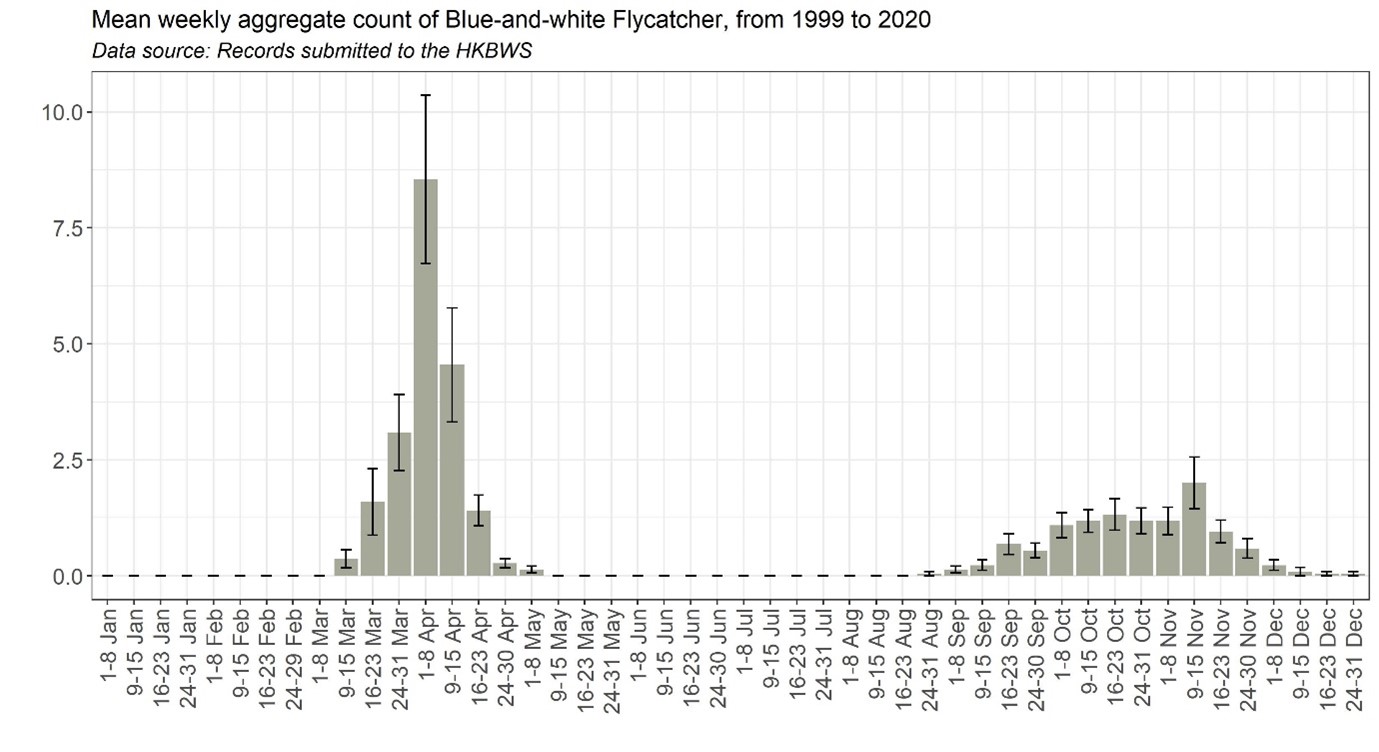
Figure 2.

Clement, P. and J. S. Marks (2020). Blue-and-white Flycatcher (Cyanoptila cyanomelana), version 1.0. In Birds of the World (J. del Hoyo, A. Elliott, J. Sargatal, D. A. Christie, and E. de Juana, Editors). Cornell Lab of Ornithology, Ithaca, NY, USA. https://doi.org/10.2173/bow.bawfly2.01
Herklots, G. A. C. 1953. HK Birds. South China Morning Post, HK.
Kennerley, P. R. (1989). Blue and White Flycatcher catching and swallowing a dragonfly. HK Bird Report 1988: 117-118.
Lam, C. Y. and M. D. Williams (1994). Weather and bird migration in HK. HK Bird Report 1993: 139-169.
Swinhoe, R. 1861. Notes on the ornithology of HK, Macao and Canton, made during the latter end of February, March, April and the beginning of May 1860. Ibis 1861: 23-57.
Vaughan, R. E. and K. H. Jones (1913). The birds of HK, Macao and the West River or Si Kiang in South-East China, with special reference to their nidification and seasonal movements. Ibis 1913: 17-76, 163-201, 351-384.
Walker, F. J. 1958. Field Observations on birds in the Colony of HK. HK Bird Watching Society, HK. (duplicated).

